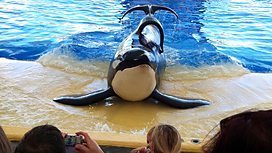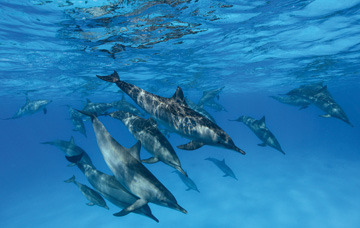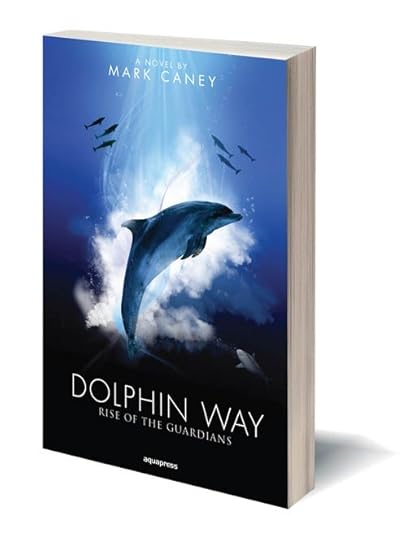Mark Caney's Blog, page 32
November 15, 2013
Watch the documentary “Blackfish” on the BBC next Thursday
 Documentary which unravels the story of notorious performing whale Tilikum, who – unlike any orca in the wild – has taken the lives of several people while in captivity. So what exactly went wrong?
Documentary which unravels the story of notorious performing whale Tilikum, who – unlike any orca in the wild – has taken the lives of several people while in captivity. So what exactly went wrong?
Shocking, never-before-seen footage and interviews with trainers and experts manifest the orca’s extraordinary nature, the species’ cruel treatment in captivity over the last four decades and the growing disillusionment of workers who were misled and endangered by the highly profitable sea-park industry.
This emotionally-wrenching, tautly-structured story challenges us to consider our relationship to nature and reveals how little we humans have learned from these highly intelligent and enormously sentient fellow mammals.
BBC Four (UK) Thu 21 Nov 2013 21:00
Source: BBC

November 14, 2013
Dolphin Way on Twitter
 If you’d like to keep up to date with our posts about dolphins on Twitter, the link is: https://twitter.com/MarkCaney
If you’d like to keep up to date with our posts about dolphins on Twitter, the link is: https://twitter.com/MarkCaney

November 13, 2013
Dolphins May Be Math Geniuses
 Dolphins may use complex nonlinear mathematics when hunting, according to a new study that suggests these brainy marine mammals could be far more skilled at math than was ever thought possible before.
Dolphins may use complex nonlinear mathematics when hunting, according to a new study that suggests these brainy marine mammals could be far more skilled at math than was ever thought possible before.
Inspiration for the new study, published in the latest Proceedings of the Royal Society A, came after lead author Tim Leighton watched an episode of the Discovery Channel’s “Blue Planet” series and saw dolphins blowing multiple tiny bubbles around prey as they hunted.
“I immediately got hooked, because I knew that no man-made sonar would be able to operate in such bubble water,” explained Leighton, a professor of ultrasonics and underwater acoustics at the University of Southampton, where he is also an associate dean.
Dolphins – Second Smartest Animal?
“These dolphins were either ‘blinding’ their most spectacular sensory apparatus when hunting — which would be odd, though they still have sight to reply on — or they have a sonar that can do what human sonar cannot…Perhaps they have something amazing,” he added.
Leighton and colleagues Paul White and student Gim Hwa Chua set out to determine what the amazing ability might be. They started by modeling the types of echolocation pulses that dolphins emit. The researchers processed them using nonlinear mathematics instead of the standard way of processing sonar returns. The technique worked, and could explain how dolphins achieve hunting success with bubbles.
The math involved is complex. Essentially it relies upon sending out pulses that vary in amplitude. The first may have a value of 1 while the second is 1/3 that amplitude.
“So, provided the dolphin remembers what the ratios of the two pulses were, and can multiply the second echo by that and add the echoes together, it can make the fish ‘visible’ to its sonar,” Leighton told Discovery News. “This is detection enhancement.”
But that’s not all. There must be a second stage to the hunt.
Dolphins, Humans Share ‘Brainy’ Genes
“Bubbles cause false alarms because they scatter strongly and a dolphin cannot afford to waste its energy chasing false alarms while the real fish escape,” Leighton explained.
The second stage then involves subtracting the echoes from one another, ensuring the echo of the second pulse is first multiplied by three. The process, in short, therefore first entails making the fish visible to sonar by addition. The fish is then made invisible by subtraction to confirm it is a true target.
In order to confirm that dolphins use such nonlinear mathematical processing, some questions must still be answered. For example, for this technique to work, dolphins would have to use a frequency when they enter bubbly water that is sufficiently low, permitting them to hear frequencies that are twice as high in pitch.
“Until measurements are taken of wild dolphin sonar as they hunt in bubbly water, these questions will remain unanswered,” Leighton said. “What we have shown is that it is not impossible to distinguish targets in bubbly water using the same sort of pulses that dolphins use.”
If replicated, the sonar model may prove to be a huge benefit to humans. It might be able to detect covert circuitry, such as bugging devices hidden in walls, stones or foliage. It could also dramatically improve detection of sea mines.
“Currently, the navy uses dolphins or divers feeling with their hands in such difficult conditions as near shore bubbly water, for example in the Gulf,” he said.
How Stuff Works: Dolphins
In terms of dolphin math skills, prior studies conducted by the Dolphin Research Cetner in Florida have already determined that dolphins grasp various numerical concepts, such as recognizing and representing numerical values on an ordinal scale. Marine biologist Laela Sayigh of the Woods Hole Oceanographic Institution said, “In the wild, it would be very useful (for dolphins) to keep track of which areas were richer food sources.”
While dolphins are among the animal kingdom’s most intelligent animals, they are not likely the only math champs.
Parrots, chimpanzees and even pigeons have been shown to have an advanced understanding of numerical concepts. The studies together indicate that math ability is inborn in many species, with number sense, mathematical skills and verbal ability perhaps being separate talents in humans that we later learn to combine.
Source: Discovery

November 6, 2013
Winner of Dolphin Way Giveaway Announced
 Congratulations to Sarah-Jayne from Portland, England who won a signed copy of Dolphin Way: Rise of the Guardians. The book is in the post and on its way to you now!
Congratulations to Sarah-Jayne from Portland, England who won a signed copy of Dolphin Way: Rise of the Guardians. The book is in the post and on its way to you now!

November 4, 2013
New species of dolphin discovered
 Just when you think we can’t possibly discover any more animals—at least the big mammals—any more, Mother Nature reminds us how silly we are once again. Hiding in plain site was a recently discovered species of humpback dolphins, just hanging out in waters just off the northern shores of Australia.
Just when you think we can’t possibly discover any more animals—at least the big mammals—any more, Mother Nature reminds us how silly we are once again. Hiding in plain site was a recently discovered species of humpback dolphins, just hanging out in waters just off the northern shores of Australia.
As if missing this species for so long weren’t silly enough, its discovery seems almost appropriate. Scientists from the Wildlife Conservation Society were trying to settle an argument that had been part of the marine mammal researcher culture for decades.
“For many years, there’s been this debate about the number of species of humpback dolphins,” said Howard Rosenbaum, director of the WCS ocean giants program. Scientists have proposed everything from two to four species within the group’s genus Sousa.
No one had been able to support or disprove that argument definitively and so settled on the two known species: the Indo-Pacific humpback dolphin and the Atlantic humpback dolphin. This was 10 years ago.
Rosenbaum remained sure more existed and so decided to begin collecting physical and genetic samples from humpback dolphin populations in all their habitat and migratory ranges, which include West Africa, Pacific Ocean, off the coast of Australia and the Indian Ocean.
When determining the genealogy of a species, scientists generally just look at the mitochondrial DNA (instead of the cell’s DNA), which is passed on only through the mother and is easier to track. However, Martin Mendez, assistant director for the Latin American and Caribbean program at WCS chose to look at the DNA from both the mitochondria and the rest of the cell. Combine that with the physical characteristics—including nose length and number and position of the teeth—and Mendez was starting at four totally different species of humpback dolphins.
Three of the species have been named, as they were ones researchers had proposed decades ago. The fourth one, however, remains unnamed and “was a pleasant surprise,” according to Rosenbaum. While this is a new species is new to science, it’s not as though the scientists had not known about the group of dolphins.
It’s rare to find a new species of mammal, said Mendez. “[But] it’s also not crazy to find new species when you’re using the kind of [genetic] information we’re using.
“One of the reasons we’re finding new species is because we’re finding new tools,” he explained. “Genetics opens a new window into these kinds of questions.”
Source: National Monitor

October 18, 2013
Record whale and dolphin sightings in North Sea, UK
The North Sea, by reputation grey, cold and empty, is becoming one of Europe’s more desirable whale and dolphin-watching places, with sightings at record levels.
This year, passengers on the King Seaways ferry that runs daily between Newcastle and Amsterdam made a record 699 sightings in the five months to 5 September , four times as many as 2011 and over three times as many as 2012. Minke whales, four species of dolphins, harbour porpoises, sharks, seals, and even a humpback whale were spotted.
But wildlife experts from the charity Orca, who accompany most North Sea crossings and verify the sightings made by passengers, say that it’s unlikely that the heavily fished sea is actually more populated with cetaceans than in previous years, and more likely down to increasing numbers of observers.
“We think it’s a case of the more eyes the better,” said Alison Lomax, head of Orca’s North Sea wildlife programme. “At times we have had 30 or more people scanning the sea from the bows of the ferry. People are now much more aware of wildlife. So they look more and see more. We’ve had evenings when whole pods of dolphins have been turning up, and we have sightings every few minutes.”
Whale and dolphin boat trips are now thriving tourist industries in Cornwall, Wales and Scotland, but few operate out of the North Sea, which is traditionally rough. Whale watching boats work out of Whitby but going by ferry across the North Sea appeals, it seems, because watchers can always pop indoors when they like for a cuppa when it inevitably rains. The best sightings this year have been 30km off Flamborough Head in Yorkshire.
“You really don’t think of the North Sea as somewhere which is full of wildlife. But it has been really spectacular. There’s loads to see. You would be very surprised,” said Lomax.
This year’s good weather is thought to have helped, too. “Porpoises and dolphins don’t spout so they are really only seen when it’s calm. They are really hard to spot in bad weather. The amazingly calm weather has had a huge impact on the number of animals we have seen. This summer we were treated to mirror-calm seas, making the animals much easier to spot.”
The sightings complement the official scientific surveys that are carried out by wildlife officers from Orca who travel on the ferry twice a month. “The passengers provide casual data, but it’s incredibly important in helping us to monitor the presence of whales and dolphins in the North Sea,” Lomax added.
Source: Guardian

October 17, 2013
Photographing Dolphin Intelligence
See full story and pictures here: http://newswatch.nationalgeographic.com/2013/10/12/photographing-dolphin-intelligence/

September 28, 2013
This dolphin flips for her human friends
She is the dolphin who seems to prefer humans to her own species — swimming up to play with people everywhere from the south coast to Sydney Harbour and Pittwater, and now Manly Beach, Australia.
On Thursday she casually swam into the shallows at the northern end of Manly Beach, allowing herself to be patted, cuddled and stroked, rubbing the legs of people standing in the shallows, playing hide and seek and swimming closely underneath delighted children taking surfing lessons.
Professional photographer Joel Coleman was taking images of surfers at dawn when the dolphin appeared and began sharing the waves with the surfers.
“The dolphin would catch a wave, then swim back to us and wait, and someone would get a wave, and then it was like ‘it’s my turn again now’,’’ Mr Coleman said.
“It would even come up and rub my legs as I was standing in shallow water. It played with kids and anyone who was in the water.
“In 20 years I’ve seen no other dolphin act anything like this. Normally they just pass by really quickly.”
Full story and photos: The Telegraph

September 26, 2013
Dolphin shows surfer how it’s done off Australian coast
 A surfer riding a wave is upstaged by a dolphin jumping out of the water right alongside him.
A surfer riding a wave is upstaged by a dolphin jumping out of the water right alongside him.
This incredible moment was captured by a self-taught photographer who was lining up his last shot of the day.
Matt Hutton, 31, was taking pictures of surfer Trent Sherborne off Kalbarri beach, Western Australia, when this happened.
‘It really is a very rare shot and I was so lucky to have been at the right place and right time and in regards to the dolphin and the surfer, Trent said he knew it was him in the photo as it’s not every day you get to eyeball a Dolphin, so it was pretty close,’ said Mr Hutton, of Perth.
‘I have had so many people write kind emails, messages, comments etc and it has been a very humbling experience, it is simply the highlight of my small photography career.
‘A few people think it’s Photoshopped but I can assure you it’s not!’
Source: Metro







